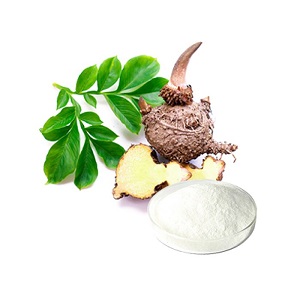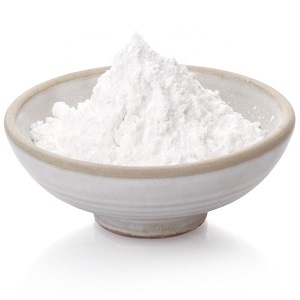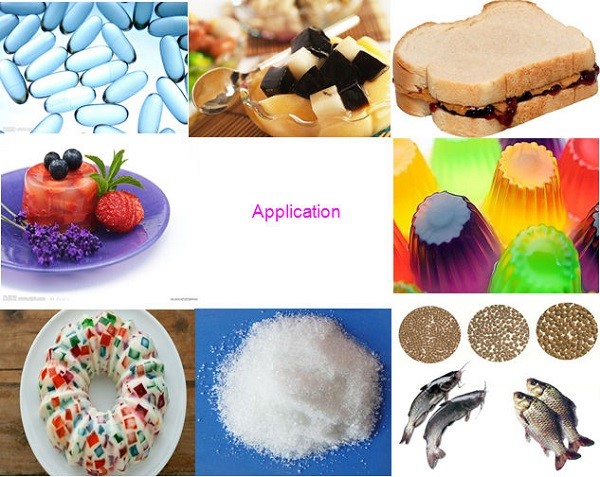FDA Approves Glucomannan Powder From Konjac Root As A Dietary Fiber Ingredient
2024-01-30 13:54:42
The US Food and Medication Organization (FDA) as of late reported that glucomannan powder, found in konjac root, will be added to the meaning of dietary fiber in the US. The FDA likewise suggested incorporating glucomannan in the rundown of nine other non-absorbable sugars that fall under the meaning of dietary fiber. Additionally, the FDA plans to "exercise enforcement discretion," allowing manufacturers to include the quantity of these additional fibers in the dietary fiber statement on nutrition labels and supplement facts labels. This decision by the FDA will provide manufacturers with new opportunities to meet the increasing demand from consumers seeking fiber claims.
As soon as 2016, the FDA previously characterized dietary fiber as specific normally happening strands that are "characteristic and flawless in plants," and added non-absorbable dissolvable and insoluble sugars that have been displayed to significantly affect human well-being, whether disengaged or manufactured.
On February 24, 2018, the Food Lawyers, Los Angeles, submitted a citizen petition to the FDA requesting that konjac flour, which contains glucomannan, be included in the category of dietary fiber on nutrition labels. After reviewing the petition, the FDA approved the request, defining glucomannan as a complex dietary fiber with demonstrated beneficial physiological effects, particularly in helping to lower cholesterol.
Evidence submitted by Food Lawyers also indicated that glucomannan can increase bowel movement frequency, reduce energy intake, and aid in weight loss. However, the FDA chose to focus solely on its impact on blood cholesterol levels.


The FDA examined 26 studies investigating the effects of glucomannan powder on blood cholesterol, including eight studies from Food Lawyers, seven from public comments, and 11 independently discovered by the FDA. Notwithstanding, 17 of these examinations neglected to yield definitive logical outcomes because of different reasons, like an unseemly measurable examination or the absence of dietary data on different parts in members' weight control plans.
Nine examinations were at last used to illuminate the FDA's choice, enveloping different populaces, incorporating kids and grown-ups with hypercholesterolemia, with test sizes going from 11 to 39 people. Participants consumed capsules or foods containing 2-13 grams of glucomannan daily. While three examinations tracked down no massive changes in cholesterol due to glucomannan, six investigations showed a reduction in all-out cholesterol as well as low-thickness lipoprotein (LDL) cholesterol. The FDA likewise noticed that one review found no effect of a sugar-confined diet, which is remarkable in the American eating regimen.
An Updated List
Glucomannan powder is the tenth non-digestible carbohydrate added by the FDA to the definition of dietary fiber. Other ingredients include mixed plant cell wall fibers, arabinoxylan, alginates, inulin, high-amylose starch, oligofructose, polydextrose, and resistant starch 4 (RS4). This addition to the criteria in 2018 marked the end of two years of uncertainty for manufacturers.
In April 2019, MGP Ingredients, Inc. submitted an application to include resistant starch 4 (RS4) in the list of dietary fibers, and it has now been fulfilled. This means that the company's flagship brands, Fibersym and FiberRite, can officially be counted as fiber and displayed on the label when calculating the fiber content of products.

The dietary fiber definition already includes seven non-digestible carbohydrates, such as β-glucan soluble fiber, psyllium husk, cellulose, guar gum, pectin, locust bean gum, and hydroxypropyl methylcellulose. It also includes naturally occurring fibers found in foods like vegetables, whole grains, fruits, cereal bran, cereal germ, and flour.
Barriers in a Saturated Market?
The expansion of the FDA's dietary fiber definition has driven rapid growth in fiber innovation. However, some industry leaders believe that this saturated market may present barriers to new entrants. Additionally, increasing the proportion of fiber-rich foods may lead to digestive discomfort. Manufacturers are faced with the challenge of providing consumers with fiber-enriched nutritional benefits, and certain fibers, especially those with high content, may cause digestive discomfort. Therefore, ingredient selection needs to be carefully considered.
Despite this, consumer interest in fiber remains strong, and there is renewed interest in fiber due to newly discovered health benefits. Recent successful cases by the FDA indicate that consumers continue to consume fiber for digestive health, but new health benefits also drive its application.
A 2018 consumer survey by Innova Market Insights showed that 44% of consumers in the United States and 33% in the United Kingdom are increasing their fiber consumption. Meanwhile, the annual average growth rate for new products with fiber claims is 21%, driven by the discovery of new health benefits. When asked about reasons for consuming fiber, most US consumers (64%) listed digestive health, but interestingly, weight management (24%) and energy (16%) were also important considerations.
Source: Nutrition insight
For related products, please visit our website:www.sxytorganic.com
Contact Us For More Details>>
E-mail:sales@sxytorganic.com
Tel: +86-029-86478251
_1737093401309.png)
